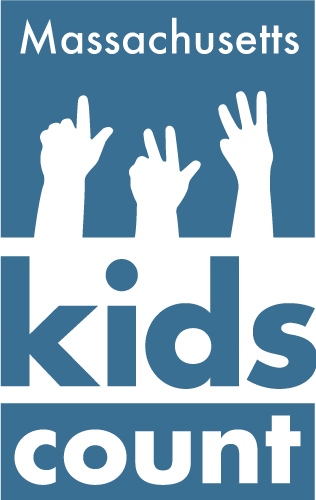What is family child care?
Family child care programs (FCCs) are operated out of the home of the owner/provider. FCCs are licensed by the state of Massachusetts to serve up to 10 children, depending on the age of the children and whether the provider employs an assistant.1 FCCs represent one of the two provider types licensed by the Department of Early Education and Care (EEC) to provide child care in Massachusetts; the other being group and school aged child care (GSAs), comprised of preschools, kindergarten, before and after-school programs, and summer programs. There are over 5,000 licensed FCCs operating in Massachusetts.2 As of July 1, 2023, there were 40,286 licensed FCC slots in Massachusetts, which represents about 17 percent of all EEC-licensed child care capacity.2
How are FCCs funded?
FCCs rely on a combination of public and private funding to operate. Much like most GSAs, FCC funding comes primarily from three sources: 1) EEC child care financial assistance (CCFA) reimbursements, 2) parent fees and tuition, and 3) operations grants disbursed by EEC. CCFA reimbursements and operations grants are public funding sources, while parent fees and tuition are provided by individual families.
1) Providers that accept children receiving CCFA are reimbursed by EEC for serving these children.3 Children are eligible for CCFA if their family income is below 50 percent of the state median income (SMI). Children remain eligible for income-based CCFA until their family income goes above 85 percent SMI.4 In FY 2024, 50 percent SMI for a family of four is $72,746 per year.5 Children are also eligible for CCFA if their family receives support from the Department of Transitional Assistance (DTA), or has an active case with the Department of Children and Families (DCF) such as for child neglect or abuse.6
A daily reimbursement rate is set by EEC and varies depending on provider type (GSA or FCC), geographic region (there are six), and the age of the child (i.e. infant, toddler, preschool, school age).7 The agency uses price data collected from a large sample of licensed providers to understand how much families are charged for care, and determines the daily reimbursement rate based on these prices.8 With this data, EEC identifies price percentiles; the federal government recommends that state agencies set rates to at least the 75th percentile of the prices paid by families for a particular care type, depending on region, and the age of children.9 The reimbursement rate was last increased by EEC in December 2022.10 With $80 million appropriated from the state legislature for these increases, EEC was able to set a floor of the 30th percentile of market rates for all subsidized child care programs across the state, still far below the federal guidelines.9
The result of using this market rate methodology means that CCFA reimbursement rates set by the EEC do not reflect the costs incurred by most providers in the state, limiting our ability to both serve the kids who would most benefit and appropriately support educators. EEC is currently taking steps to move away from the market rate methodology and towards a cost of care methodology, which would allow rates to more accurately reflect providers’ operational costs.11
2) Parent fees and tuition are funds paid directly to providers from families. Parent fees are set by EEC and refer to the out-of-pocket costs that families pay if they are receiving income-eligible CCFA.12 Families do not pay parent fees for care if their CCFA is DTA or DCF-based, if they are experiencing homelessness, if the child’s primary caregiver is a non-parent or guardian, or if their income is below 100 percent of the federal poverty line.13,14 Parent fees are adjusted based on family size and income, and are typically about seven percent of the family’s income.13 Tuition is the fee that is paid to providers by families that do not receive CCFA (also known as “private pay”). These rates are set by individual providers, based on their operating expenses and other forms of revenue they may receive. In Massachusetts, parents pay the highest out-of-pocket cost for childcare of any other state.15 However, even these relatively high family fees do not cover the cost of providing care that meets state regulations.16 EEC and other licensing agencies across the country require specific child to teacher ratios to ensure high-quality care.17 While these standards are necessary for safety and quality instruction, the operational expenses required to meet these ratios pose a challenge to providers.
3) EEC operations grants (sometimes referred to as “Commonwealth Cares for Children” “C3” grants) are disbursed to providers based on licensed capacity, staffing levels, and equity-based need.18 These grants were created in 2021 using federal COVID relief funds.19 All EEC-licensed providers are eligible for these grants and their use is flexible.18 The grants feature an equity adjustment, which increases the base grant amount if the program is located in a high social vulnerability (measured by the CDC’s social vulnerability index or SVI) census tract and/or if at least a third of the children enrolled in the program receive CCFA.18 Providers must apply for operations grants on a monthly basis. As of September 2023, about 92 percent of providers participated in the grant program.20 In FY 2024 the Legislature provided $475 million to continue operations grants after the expiration of federal COVID relief.19,21 Each year moving forward, operations grants funding will require legislative action to continue to stabilize and sustain the child care sector.
What challenges do FCCs face?
Unlike GSAs with typically larger staffs and administrative structure and support, FCC providers act as both educator and business owner. This dynamic inherently limits the capacity that the provider has to operate in either of those roles. In FY 2023, 42 percent of providers were able to employ an assistant, which increases a program’s licensed capacity.22 Although an assistant allows a provider to serve more children and increase their administrative capacity, an assistant also represents a wage that must be paid, on top of other operational expenses. As is true for most early educators, FCC providers seldom earn a living wage, with the majority of FCC providers earning less than the equivalent of the state minimum wage.23 Even with the collection of parent fees and tuition, CCFA reimbursement, and C3 grants, the cost of program operation keeps providers from taking home a more substantial income.
Public support for FCCs increases equity
FCC providers perform work that is essential to the social and economic functions of the Commonwealth. As is the case with early education broadly, these providers are disproportionately female. Black residents make up about 10 percent of the Massachusetts population, but 13 percent of FCC owners, compared to 7 percent of GSA owners.22,24 From the workforce perspective, FCCs represent a potential engine for economic mobility for people who have been traditionally excluded from business opportunities. Moreover, FCCs are disproportionately likely to operate in more vulnerable communities. The share of FCC slots provided in Massachusetts’s most socially vulnerable census tracts is eleven percentage points higher than the FCC share of all childcare slots in the Commonwealth.2
A Commonwealth that features high-quality, affordable child care accessible to every family that seeks it will require each piece of the sector to sustain and expand capacity. As we center racial and economic equity in early education expansion, FCCs are an important public investment. By creating conditions under which these businesses can thrive, we will move closer to an equitable Commonwealth where children, educators, and families can thrive.
References
1 Commonwealth of Massachusetts Department of Early Education and Care. “Learn about Family Child Care”. 2023.
2 Commonwealth of Massachusetts Department of Early Education and Care. “Data on Massachusetts Child Care Programs”. July 2023.
3 Code of Massachusetts Regulations. “600 CMR 10.00: Child care financial assistance”. Page 14 (62.2). 2023.
4 Commonwealth of Massachusetts Department of Early Education and Care. “Financial Assistance Style Guide”. 2022.
5 Commonwealth of Massachusetts Department of Early Education and Care. “Income Eligibility Table.” 2023.
6 Commonwealth of Massachusetts Department of Early Education and Care. “Apply for funds to help pay for child care”. 2023.
7 Commonwealth of Massachusetts Department of Early Education and Care. “Daily reimbursement rate for early education and care programs”. 2022.
8 Commonwealth of Massachusetts Department of Early Education and Care. “Massachusetts 2022 Market Rate Survey and Narrow Cost Analysis Final Report”. Pgs. 7, 14-15. 2022.
9 Meeting of the Board of the Massachusetts Department of Early Education and Care. “Board Meeting Materials (Slide Deck)”. Slides 11, 15. April 2023.
10 Meeting of the Board of the Massachusetts Department of Early Education and Care. “Board Meeting Materials (Slide Deck)”. Slide 20. December 2022.
11 Meeting of the Board of the Massachusetts Department of Early Education and Care. “November EEC Board Meeting Slide Deck”. Slide 17. November 2023.
12 Commonwealth of Massachusetts Department of Early Education and Care. “While Getting Child Care Financial Assistance”. Parent Fee Chart FY 2024. 2023.
13 Commonwealth of Massachusetts Department of Early Education and Care. “While Getting Child Care Financial Assistance”. 2023.
14 Meeting of the Board of the Massachusetts Department of Early Education and Care. “June 8, 2021 Board Meeting Materials (Presentation)”. Slide 14. June 2021.
15 Economic Policy Institute. “Child care costs in the United States: The cost of child care in Massachusetts”. 2020.
16 Child Care Aware of America. “Why Does Child Care Cost So Much Yet Providers Make So Little? | Child Care Aware of America”. 2018.
17 Code of Massachusetts Regulations. “600 CMR 7.00: Standards for the licensure or approval of family child care; small group and school age and large group and school age child care programs”. Page 35. 2023.
18 Massachusetts Department of Early Education and Care. “Commonwealth Cares for Children (C3) Grants”. 2023.
19 Jones, C. “ARPA and Federal Early Education Funds in Massachusetts”. February 2022.
20 Data obtained from EEC in November 2023.
21 MassBudget. “Budget Browser- Early Education and Care”. 2023.
22 Data requested from the Massachusetts Department of Early Education and Care. September 2023.
23 Meeting of the Board of the Massachusetts Department of Early Education and Care. “Board Meeting Materials (Slide Deck)”. Slide 47. December 2022.
24 U.S. Census Bureau. ACS: 5-Year Estimates Data Profiles. DP05: ACS Demographic and Housing Estimates. 2021.





